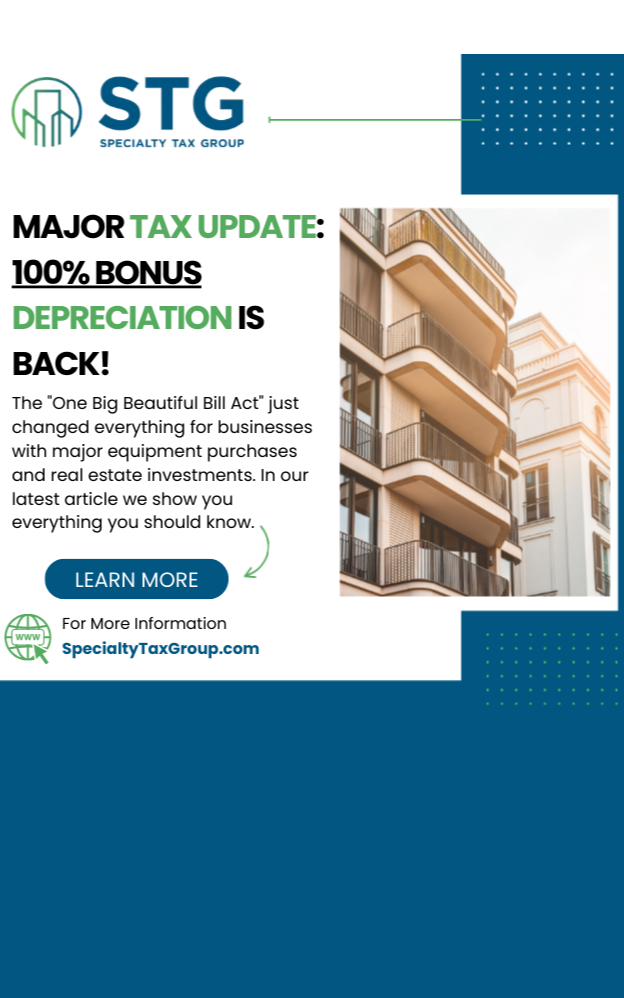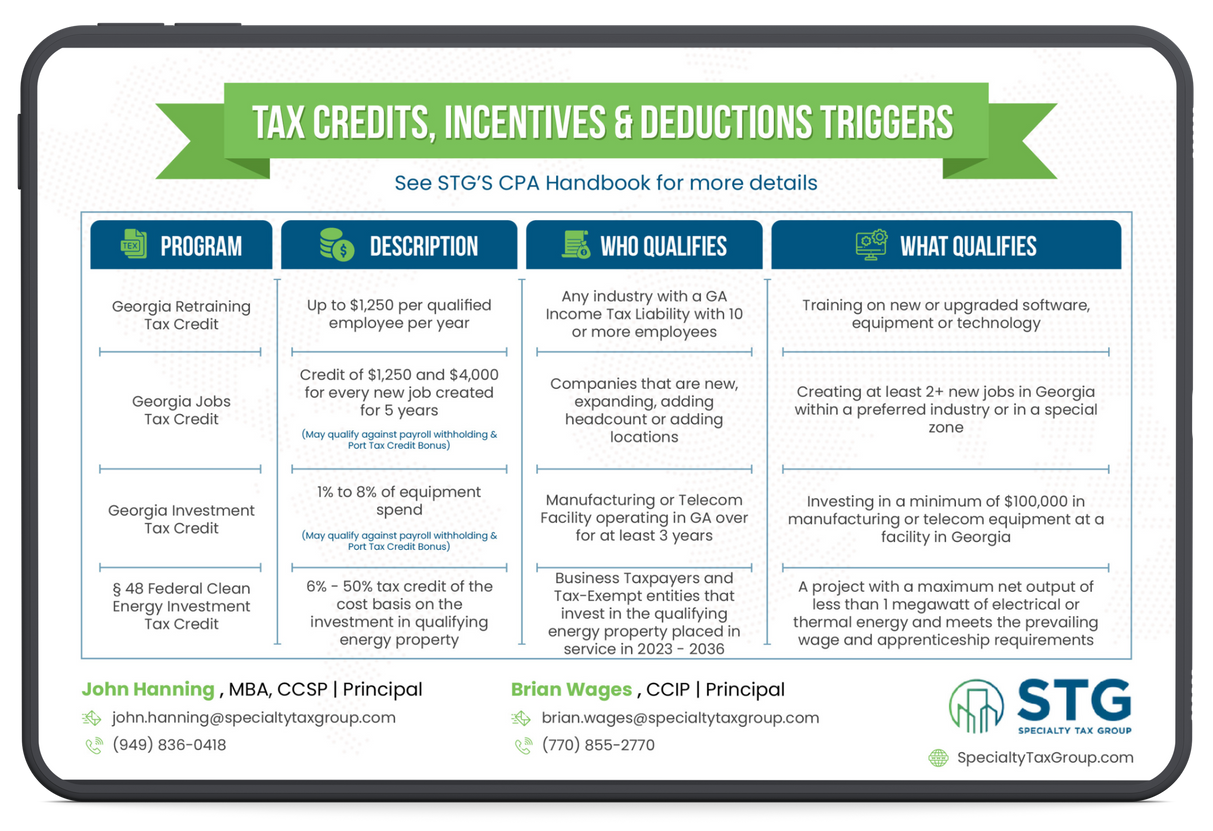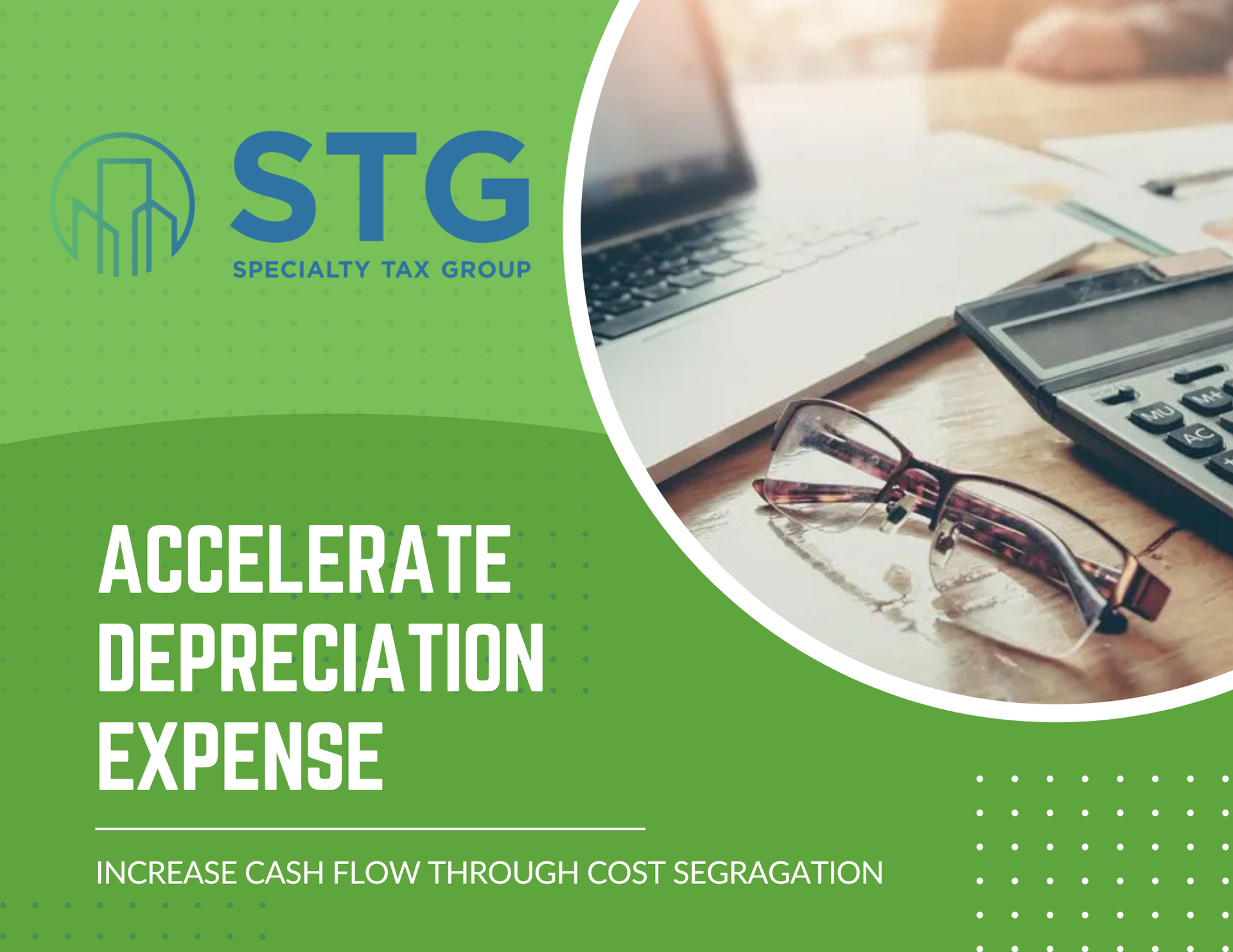This blog post has been researched, edited, and approved by John Hanning and Brian Wages. Join our newsletter below.
Key Takeaways
- Significant Tax Reduction Opportunity: On July 4, 2025, the "One Big Beautiful Bill Act" (OBBBA) became law, allowing taxpayers a first-year depreciation deduction of 100% of the adjusted basis of Qualified Production Property (QPP)
- Time-Sensitive: Construction must begin after Jan. 19, 2025, and before Jan. 1, 2029, with property placed in service before Jan. 1, 2031
- Financial Impact: The time value of money benefit versus normal 39-year depreciation is 13.5% or $1.35 million on a $10 million investment
- Manufacturing Focus: QPP covers nonresidential real property used as an integral part of U.S.-based manufacturing, refining, agricultural production, or chemical production
- Important Restrictions: QPP does not apply to leased property or related-party transactions, and must be used for 10 years to avoid recapture
What is the OBBB Qualified Production Property Tax Deduction?
The One Big Beautiful Bill Act (OBBB) changed the game for American manufacturers. This sweeping tax reform initiative was designed to overhaul the U.S. tax code, and one of its biggest wins is the new Qualified Production Property deduction.
Here's what makes this so special: This marks a significant expansion, as bonus depreciation has historically been applied primarily to tangible personal property, not real estate.
Breaking Down QPP in Simple Terms
Qualified Production Property is basically the buildings and structures you use for:
- Manufacturing products
- Refining materials
- Chemical production
- Agricultural production
The key word here is "integral" - the property must be essential to your production process, not just office space or storage.
Critical Dates You Cannot Miss
Getting the timing right is everything with QPP. Miss these dates, and you lose out on potentially millions in tax savings.
| Timeline Requirement | Date Range | What It Means |
|---|---|---|
| Construction Start | After Jan. 19, 2025 - Before Jan. 1, 2029 | When you break ground |
| Property Placed in Service | After July 4, 2025 - Before Jan. 1, 2031 | When you start using it |
| Use Requirement | 10 years minimum | How long you must use it for production |
Why These Dates Matter
Section 168(n) is allowed for property for which construction begins after Jan. 19, 2025, and before Jan. 1, 2029, if the property is placed in service after July 4, 2025, and before Jan. 1, 2031.
This gives you a 4-year window to start construction and a 6-year window to finish. That might sound like plenty of time, but major manufacturing facilities take years to plan and build.
The Massive Tax Benefits Explained
The QPP deduction isn't just another small tax break. It's a complete game-changer for how you handle major facility investments.
100% Immediate Expensing vs. Traditional Depreciation
Normally, when you build a manufacturing facility, you have to spread the tax deductions over 39 years. With QPP, you can immediately deduct the full adjusted basis of eligible QPP in the year it is placed in service.
Real-World Example:
- $10 Million Manufacturing Facility
- Traditional Depreciation: $256,000 deduction per year - Straight line 39 years
- QPP Way: $10 million deduction in year one
- Net Benefit: $1.35 million assuming a 21% tax rate and 7% present value rate
Cash Flow Impact
This immediate deduction creates massive cash flow benefits:
- Year 1: Huge tax savings from the full deduction, unused deductions can be carried forward up to 20 years.
- Years 2-39: Lower annual deductions but much better cash position
- Overall: Better return on investment and faster payback
What Qualifies as QPP (And What Doesn't)
Understanding exactly what counts as Qualified Production Property is crucial for maximizing your benefits.
Properties That Qualify
Manufacturing Facilities:
- Assembly plants
- Production lines
- Quality control areas
- Manufacturing and production areas only
Refining Operations:
- Oil refineries
- Chemical processing plants
- Biofuel production facilities
Agricultural Production:
- Food processing plants
- Grain elevators
- Livestock processing facilities
Chemical Production:
- Specialty chemical manufacturing
- Pharmaceutical production facilities
- Industrial chemical plants
Properties That Don't Qualify
Office and Administrative Areas:
- Corporate headquarters
- Administrative offices within manufacturing facilities
- Sales and marketing spaces
Storage and Warehousing:
- Raw material storage
- Finished goods warehouses
- Distribution centers
Leased Properties:
- QPP does not apply to leased property
- Properties acquired through related-party transactions
Strict Rules You Must Follow
The QPP deduction comes with several non-negotiable requirements. Break any of these rules, and you could lose the entire benefit.
1. The Election Requirement
Taxpayers must make an election to designate such property as QPP to claim the deduction. This isn't automatic - you have to actively choose it and file the proper paperwork.
2. Original Use Rule
The deduction generally is limited to new or original use property. You can't buy a used facility and claim QPP benefits on the full purchase price.
3. Geographic Restrictions
The property must be placed in service in the United States.
No overseas facilities qualify, even if they're owned by U.S. companies.
4. The 10-Year Commitment
Here's the big risk: QPP must be used in a qualified production activity for a period of 10 years after it is placed in service, or it will be subject to recapture rules.
What Recapture Means:
- If you stop using the property for qualified production within 10 years
- The IRS can "recapture" (take back) the tax benefits you claimed
- You'll owe back taxes plus interest and penalties
How QPP Works with Other Tax Benefits
The OBBB didn't just create QPP in isolation. It enhanced several other business tax benefits that work together.
Bonus Depreciation Restoration
The amended bonus depreciation provisions reinstate and make permanent 100% first-year depreciation for qualified property acquired and placed in service after January 19, 2025.
For detailed information on bonus depreciation rules, consult IRS Publication 946.
This means you can potentially use:
- QPP deduction for your building and structures
- 100% bonus depreciation for equipment and machinery
- Enhanced Section 179 for additional qualifying assets
Section 179 Enhancement
The OBBB increases the maximum amount a taxpayer may expense under Section 179 from $1 million to $2.5 million. The new $2.5 million Section 179 maximum will be phased out, dollar-for-dollar, as eligible expenditures exceed $4 million.
Permanent Section 199A Deduction
The OBBBA makes permanent the existing Qualified Business Income (QBI) deduction of 20% under Section 199A. Absent this change, the QBI deduction would have expired at the end of 2025.
For manufacturers organized as pass-through entities, this creates a powerful combination of benefits.
Strategic Planning for Maximum Benefits
Getting the most from QPP requires careful planning and coordination with other tax strategies.
Timing Your Construction
Since construction must start after January 19, 2025, plan carefully:
- Q1 2025: Finalize project plans and permits
- Q2 2025: Begin construction to meet deadline
- 2025-2030: Complete construction and place in service
- 2025-2035: Maintain qualified use for 10 years
Cost Segregation Integration
Smart taxpayers combine QPP with cost segregation studies to maximize benefits:
- QPP deduction for the building structure
- Accelerated depreciation for non-QPP components like office areas
- Bonus depreciation for personal property and equipment
Documentation Requirements
Proper documentation is essential for audit protection:
Engineering Studies:
- Detailed analysis of which areas qualify as QPP
- Separation of production vs. non-production areas
- Cost allocation between different property types
Legal Documentation:
- Election forms filed on time
- Compliance monitoring for 10-year requirement
- Change in accounting method forms if needed
State Tax Considerations
While QPP provides federal tax benefits, state treatment varies significantly.
Conformity Issues
A taxpayer that skips the cost segregation of shorter-lived property and accounts for it as QPP in its entirety could risk losing accelerated depreciation benefits at the state level due to this conformity issue.
Key States for Manufacturers:
- Georgia: Georgia tax credits available for job creation
- Tennessee: Additional manufacturing incentives
- South Carolina: Job tax credits for qualifying businesses
Multi-State Strategies
For companies with facilities in multiple states:
- Analyze each state's conformity with federal QPP rules
- Plan allocation strategies for maximum overall benefit
- Consider timing differences between state and federal benefits
Implementation Roadmap
Successfully claiming QPP benefits requires a systematic approach.
Phase 1: Assessment (Months 1-3)
Evaluate Your Opportunities:
- Review planned construction projects
- Analyze existing facilities for potential expansions
- Quantify potential tax benefits
Professional Team Assembly:
- Tax advisors familiar with QPP rules
- Engineers for technical analysis
- Legal counsel for compliance issues
Phase 2: Planning (Months 3-6)
Project Design Optimization:
- Maximize QPP-eligible areas in facility design
- Plan integration with other tax strategies
- Develop 10-year use compliance monitoring
Documentation Strategy:
- Engineering studies and cost allocation
- Election timing and filing procedures
- State tax coordination planning
Phase 3: Execution (Construction Period)
Construction Management:
- Ensure construction starts after January 19, 2025
- Maintain detailed cost records by property type
- Monitor compliance with QPP requirements
Tax Planning Coordination:
- File necessary elections on time
- Coordinate with R&D tax credits if applicable
- Plan for potential audit inquiries
Risk Management and Compliance
QPP benefits come with significant compliance obligations and audit risks.
Common Pitfalls to Avoid
1. Related Party Transactions
- QPP does not apply to property acquired through a related-party transaction
- Be careful with parent-subsidiary arrangements
- Consider structuring alternatives for complex ownership
2. Mixed-Use Facilities
- Only production areas qualify for QPP
- Office and administrative areas must be handled separately
- Proper cost allocation is critical
3. Timing Mistakes
- Construction start dates must be documented
- Placed-in-service dates affect benefit timing
- Election deadlines cannot be missed
Audit Protection Strategies
The IRS will likely scrutinize QPP claims carefully:
Documentation Standards:
- Detailed engineering reports
- Clear cost allocation methodologies
- Ongoing compliance monitoring systems
Professional Support:
- Work with experienced tax professionals
- Maintain relationships with qualified engineers
- Prepare for potential audit inquiries
Looking Ahead: Legislative and Regulatory Developments
QPP is brand new, and additional guidance is expected. For comprehensive analysis of all OBBB changes, see the Tax Foundation's detailed FAQ.
Pending IRS Guidance
Guidance is needed for taxpayers to implement Section 168(n), although given the significant amount of guidance needed to implement the OBBB, it is unclear when such guidance will be issued.
Expected Areas of Clarification:
- Detailed definitions of "integral use"
- Cost allocation methodologies
- Recapture calculation procedures
Planning for Uncertainty
While waiting for additional guidance:
- Take conservative positions on unclear issues
- Maintain detailed documentation of all decisions
- Stay current with emerging guidance and regulations
Industry-Specific Applications
According to the Bureau of Economic Analysis manufacturing data, these industries represent significant opportunities for QPP utilization. Different industries can leverage QPP in unique ways.
Manufacturing Sector
Typical QPP Applications:
- Automotive assembly plants
- Electronics manufacturing facilities
- Textile production facilities
- Food processing plants
Integration Opportunities:
- Combine with manufacturing state tax credits
- Coordinate with equipment bonus depreciation
- Layer with R&D credits for innovation facilities
Chemical and Refining
Specialized Considerations:
- Environmental compliance facilities may qualify
- Process control buildings included
- Safety and emergency response structures
Agricultural Production
Unique Applications:
- Grain processing facilities
- Dairy processing plants
- Meat packing facilities
- Cold storage with processing components
Conclusion
The OBBBA Qualified Production Property deduction represents one of the most significant tax incentives for U.S. manufacturing in decades. With potential benefits of $1.35 million on a $10 million investment, it's an opportunity no manufacturer should ignore.
Key Action Items
Immediate Steps:
- Review your 2025-2029 construction plans
- Evaluate existing expansion opportunities
- Consult with qualified tax professionals
- Begin engineering analysis for complex facilities
Long-Term Strategy:
- Integrate QPP planning with overall business strategy
- Coordinate with other OBBB tax benefits
- Develop compliance monitoring systems
- Stay current with emerging IRS guidance
Final Thoughts
Taxpayers that started construction of manufacturing facilities or that are considering building new manufacturing facilities should consult their tax adviser to model the benefits available under Section 168(n) and Section 168(k) to evaluate the best options for cost recovery.
The QPP deduction is complex, but the potential rewards are enormous. Success requires careful planning, proper documentation, and ongoing compliance management. For manufacturers ready to invest in American production, QPP offers a once-in-a-generation opportunity to dramatically improve the economics of new facility construction.
Disclaimer: This article provides general information about tax law changes and should not be considered tax advice. Consult with qualified tax professionals to determine how these provisions apply to your specific situation. Tax laws are complex and subject to change.
2024 Tax Guide





